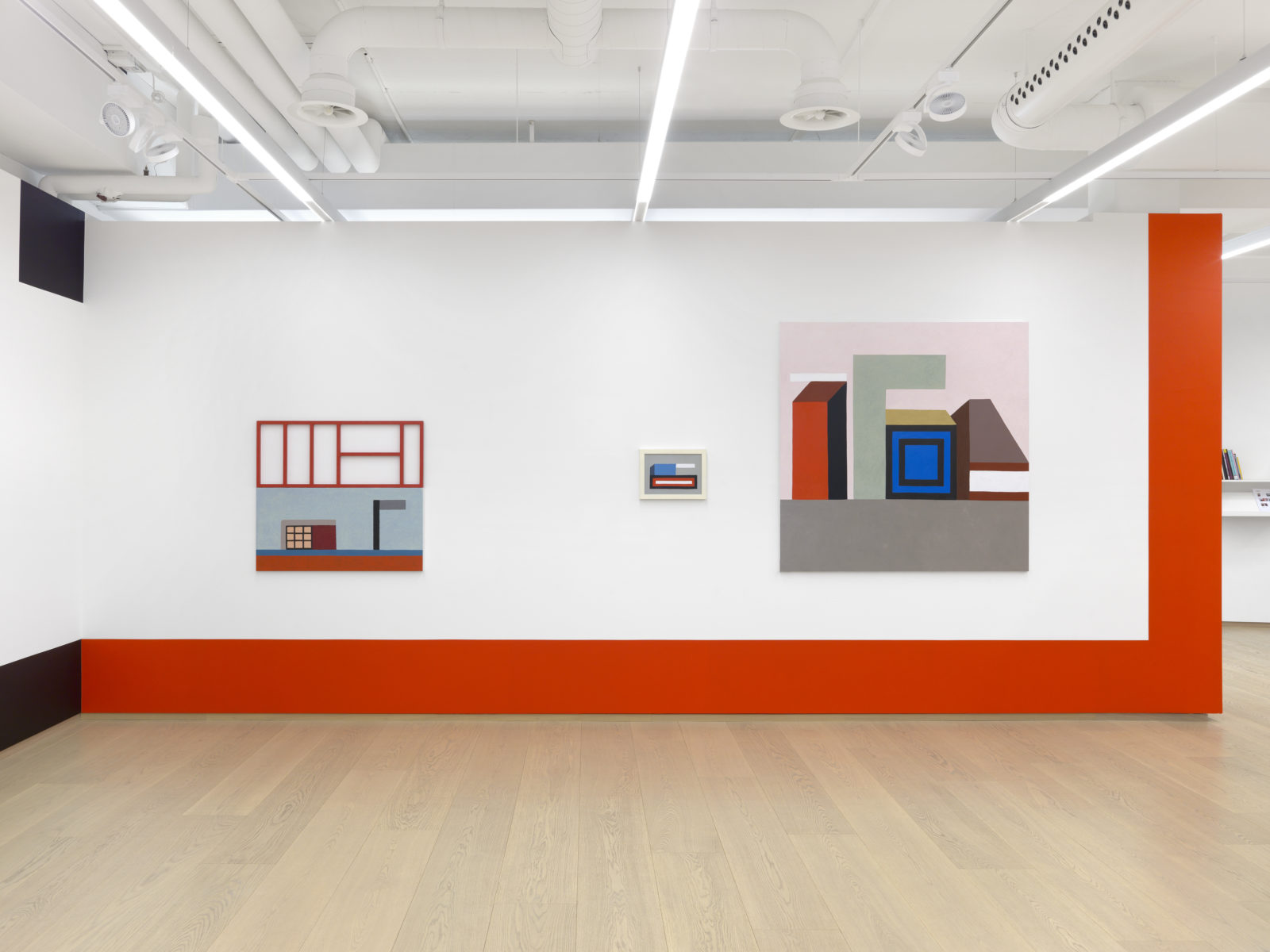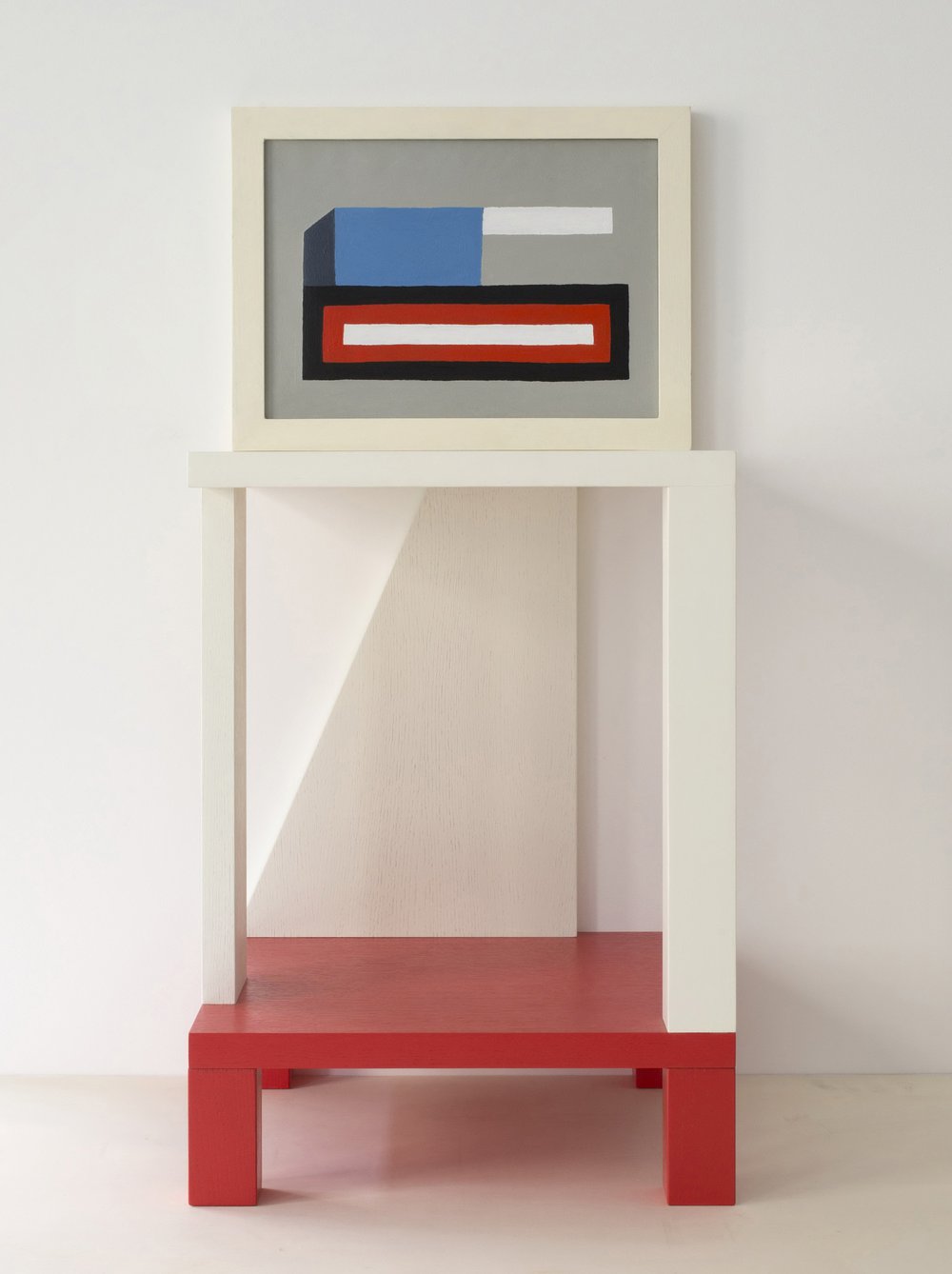Nathalie Du Pasquier: In Conversation with Alfredo Cramerotti
by Alfredo Cramerotti

The conversation between writer Alfredo Cramerotti and artist Nathalie Du Pasquier took place during January 2019. It just preceded the preparations for a number of studio visits by Cramerotti in Italy—one of which with Du Pasquier. She is what he calls an artist-artist, almost in the classical sense. Her work, based on a deep and thorough understanding of materials, processes and studio practice, develops in the forms of sculpture, installations, environments, 2-D surfaces, paintings, as well as an oblique take on objects and artifacts according to the context and the nature of the exhibition.
Alfredo Cramerotti: Let’s start with the main ideas behind your work—I realize this is a big question, and of course I have my own reading of your work, but it may not be the same with what you think are the main guiding principles of what you do. I am interested in knowing how you yourself ‘read’ your work. Can you step outside Nathalie for a moment and let me know what you see?
Nathalie Du Pasquier: How I do my work, what I put in it, how it happens and how, once it is done, I read it, are in fact two different things. I have the impression there is no main idea behind what I do, I do think in the process of making but I do not have an idea a priori—it happens and then I arrange it. When I read it, as you say, I can see I am interested in arranging thing, this is probably part of my personality. It is as if all my work was a big alphabet where I add letters and words every day in order to, then, construct new sentences.
AC: Did you get any particular source of inspiration for the visual styles of your series of works—for instance, the room environments, the ‘gates’ (my term), the surfaces such as the carpets, or the painting works, etc.—or did they arrive in relation to the nature of the materials you have used, and locations (either physical, psychological or situational) you were positioned in?
NDP: There is no particular source of inspiration or everything inspires me. I look at a lot of things, not particularly at contemporary art though. There is my life and all the different moments of forty years of work. But I can say that when I design a carpet, I like it to look like my idea of a carpet (that is Persian, even if then it turns out not to look Persian at all), with a border, a little foreign territory on the floor of the room. When I do a painting, I want it to look like a painting, I try to paint it well. I am quite traditional, also when installing my works, I use very reasonable ideas.
AC: Can you dive a bit into the technical aspects of the works? Such as the gathering of raw material, software or hardware (in the wide sense; they could be thoughts and bodies) used, as well as the selection and editing process? What are some of the particular challenges you (and your team, or the collaborators you work with) have faced in realizing the works?
NDP: I am quite practical. I work by myself and what I cannot do, I do not do. I worked as a designer for a few years before 1987, which was my education. I have learned to organize myself; I am able to ask a carpenter to build something that I know I will use for a particular project. For the Camden project I asked a company manufacturing wallpaper to print the modules I used in the exhibition. There was nothing that required a particular skill. For the ceramic pieces both at Camden and Apalazzo, I designed the pieces that were done by a ceramic factory I had worked with in the past.
The show in Vienna was the first big exhibition I had and the first time I was invited to present all of my work. And that was a challenge, because I had never done anything like that—a psychological challenge and a bit of a practical one too. It meant digging into old works and putting them in relation with newer ones. I did not want to have a retrospective, so together with the curator Luca Lo Pinto, we decided to build rooms in the space of the Kunsthalle and to simply install the different works following themes that emerged as we were going through the archive. We decided to mix the different typologies and years with no labels as if we had inherited a house full of things we knew nothing about. Even though the work appears to have changed a lot, and in a way it has, there are furniture, textiles, still life paintings, constructions, drawings, projects, abstract objects, abstract paintings, carpets… As everything is always the result of what happened before, there is always a familiarity between the elements and certain signs that come back. This exhibition has been very interesting to understand what I said at the beginning of the interview: it made me use my work as raw material. This exhibition in the end was a big installation as I could not see any other way of showing my work.

AC: I saw several installations of your work – at Apalazzo Gallery in Brescia, Kunsthalle Vienna, Camden Art Centre in London, and Greta Meert in Brussels. I always got the feeling to ‘enter’ something, although sometimes just subtly and not physically. As a viewer, I was able to move from and to, around the works—or beside them, or between them—but could not really experience them from an ‘external’ point of view. It seems to me that they were not meant to be ‘faced’ so to speak. You chose instead to have an ‘immersive’ type of experience. What is the underlying approach to this?
NDP: Maybe the external point of view is different for everybody. For me, my work is my house so I do not have that feeling of immersion you talk about; it is natural for me to concentrate on the individual elements, to concentrate on the paintings which are the result of most of my activity. When I work I dedicate to the piece I am on without thinking how it will fit the rest. I am conscious that the installation aspect of my work has recently been what people have seen as more prominent. I know I have a way in putting things together. When I was working a lot with a Chinese dealer, his Chinese clients liked in my paintings the fact the arrangements of objects were harmonious to their taste, and without really understanding why, it pleased me. But I am not trying to create an immersive type of experience, I know it happens and it pleases me too.
AC: Tell me a secret about your work. Even a small one.
NPD: Doing a painting is the most important aspect of my work, but I call myself a painter, so maybe it is no secret!